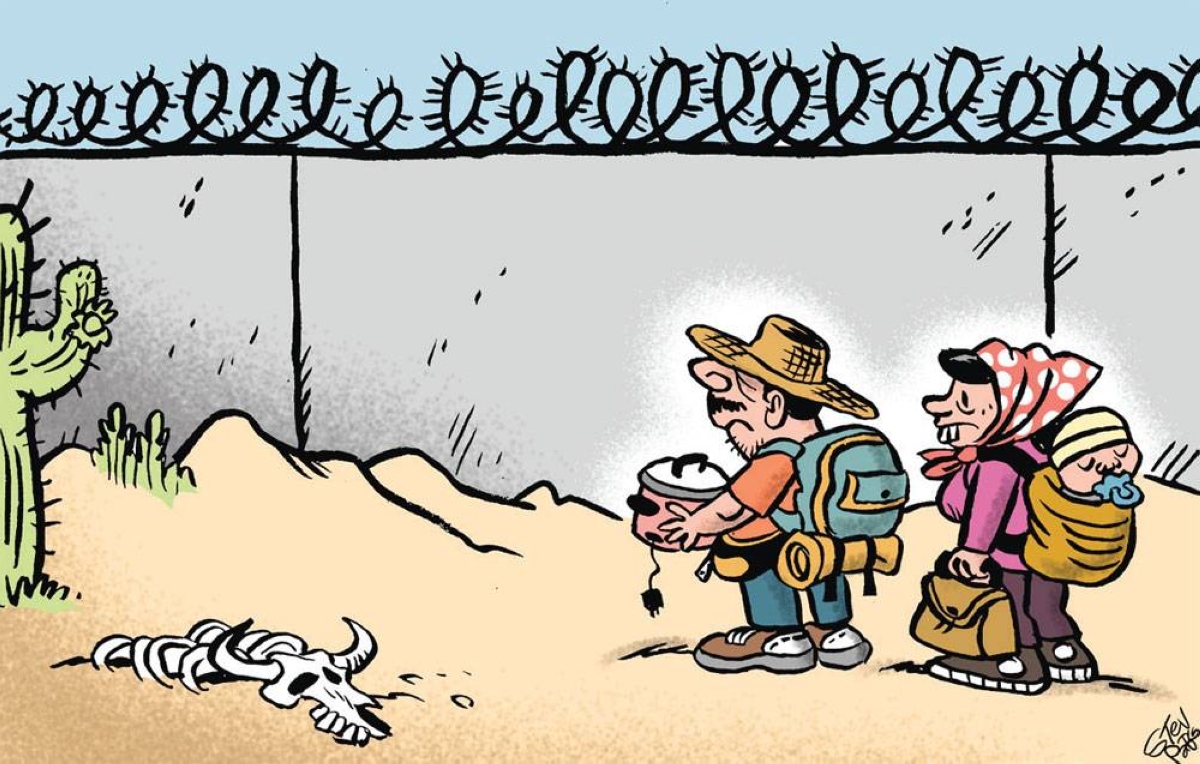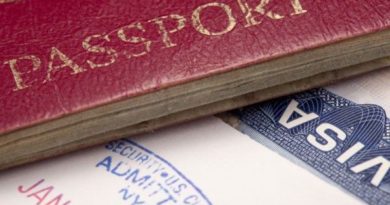INT’L VISA-IMMIGRATION | MIGRANT MATTERS- The first shall be last: Migrants’ dreams and recurring nightmare

.
.
IMMIGRANTS religiously following the migration and visa news from Australia, Canada, New Zealand, the UK — and the US — are aware by now that the first choice for Filipinos when considering permanent residency is the United States.
Migration numbers of other countries bear witness.
Right before the pandemic, only 1,969 Filipinos were granted residency in New Zealand. The number has gone up to 6,3,93 in 2022. So far for the program year 2022-2023, New Zealand has approved 12,678 residency from Philippine applicants.
This is from the New Zealand Statistics’ “Resident visas decided (applications), by nationality and financial year of decision.”
Promising, right?
During the same period (2019-2020), just 457 residency visas from those with long-term skilled shortage were granted: 1,348 the next program year and only 44 in 2022-2023.
Before the pandemic, out of 11,648 applicants in the skilled migrant category only 1,066 were granted. The approval ratio improved in 2023 with 1,830 from 2,564 applicants. The total number of permanent residency applications granted by Immigration New Zealand over a 10-year period (2012 to 2022) is 637,584.
Not bad.
The US, on the other hand, admitted 1,031,765 permanent residents in 2019 alone — 45,920 from the Philippines.
A year after Covid-19, despite the immigrant admission ban and limited visa issuances at consular posts worldwide, the US admitted 740,002 permanent residents worldwide, 27,511 from the Philippines. Of this total, 17,726 were the immediate relatives of US citizens, 1,671 family-preference applicants and 7,855 employment-based applicants.
There is the 25,620 per country limit set by law. The 2023 data from the Department of Homeland Security 2021 yearbook, however, shows that the immediate relatives of US citizens — not subject to quota — gobbled up more than 69 percent of the total immigrant visas issued.
From January to December 2022, the priority dates for the family preference categories have not moved. The F1 category for example remained stuck on March 1, 2012, for the whole year and up to April 2023.
The just published May 2023 Visa Bulletin reflects the continuing freeze of all the family-preference categories: F1 at 01Mar2012; F2A – 08Sep2020; F2B – 22Oct2011; F3 – 08Jun2002; and F4 – 22 Aug2002.
d workers
Down Under, 90,499 permanent residents were admitted in Australia for the program year 2019-2020 — 66,133 through skilled migration and only 23,515 in the family stream. The next program year, the total number of permanent resident arrivals increased to 107,997. The skilled migrants still outnumber the family stream but not by much — 56,687 to 50,131, respectively.
Looking ahead to the 2023-2024 financial year, the Department of Home Affairs (DHA) acknowledges that “workforce shortages and pressing needs for skills remain a challenge to Australia’s economic recovery from the pandemic. The number of unfilled job vacancies has been above 470,000 since May 2022, and more than double pre-pandemic levels. Four services industries are projected to provide more than three-fifths of the total projected employment growth between 2021 and November 2026: health care and social assistance; accommodation and food services; professional, scientific, and technical services; and education and training.”
For the next program year, therefore, the DHA’s first choice are the skilled migrants, allocating 73 percent of the total immigrants to be admitted for the program year 2023-2024.
This posture is also anchored on the DHA’s realization that “attractiveness cannot be taken for granted when the international competition for talent continues to intensify due to major migrant receiving countries facing similar population and labor force challenges.”
The United Kingdom does not have the same set of statistics for permanent resident arrivals because only those who have been legally employed for at least five years may apply for indefinite leave to remain (ILR), the country’s version of permanent residency.
In 2021-2022, the Home Office website shows “there were 133,451 decisions on applications for settlement in the UK in 2022, 24 percent more than in 2021, and 41 percent more than 2019. Of these,131,728 (99 percent) were granted.”
To qualify for ILR, intending immigrants must first be admitted either as skilled workers or international students.
Canada leads as immigrants’ choice
On this basis, Canada is leading the rest of the five popular choices as immigrants’ destinations.
Immigration accounts for almost 100 percent of Canada’s labor force growth.
The Immigration, Refugee, Citizenship Canada (IRCC) official website shows that “roughly 75 percent of Canada’s population growth comes from immigration, mostly in the economic category. By 2036, immigrants will represent up to 30 percent of Canada’s population, compared with 20.7 percent in 2011.”
“Canada welcomed a record-breaking 405,000 new permanent residents in 2021, surpassing the previous record from 1913. After another record year in 2022, Canada remains on track to reach its target of more than 431,000 new permanent residents.”
Of the total 405,999 permanent residents welcomed in 2021 into Canada, 191,338 were individuals already in Canada as international students or temporary workers who qualified under the temporary to permanent residents’ pathways.
In that same year, a total of 445,776 were foreign students holding study permits including those with post-graduate work permits and 415,817 work permit holders under the temporary foreign worker program and the international mobility program.
How long will love affair last?
Undoubtedly, Canadians remain enamored with the benefits that immigrants bring with them: international students contribute over $22.3 billion per year to the Canadian economy — greater than exports of auto parts, lumber, or aircraft. And health care workers, including recent arrivals and graduates, kept Canada’s health care system responsive during the pandemic.
In 2019, Pew Research’s global survey found that “Canada was the one country most supportive of the notion that immigration makes our country stronger. In 2020, a Gallup survey ranked Canada as the world’s most migrant friendly nation.”
There are signs, however, that pink is gradually turning to either angry red or anxious green.
In November 2022, a poll commissioned by the Association of Canadian Studies found “that half of respondents believed that Canada was bringing in ‘too many’ immigrants. Even the Canadians who welcomed the newcomers were skeptical; 75 percent of all respondents expressed ‘concern’ about what the immigration surge might mean for the country’s immediate future.”
Seventy-five percent of the poll respondents agreed that “they were very or somewhat concerned that the plan would result in excessive demand for housing as well as health and social services” despite the assurances of Immigration Minister Sean Fraser that “the new workers could actually enable the construction of more homes by addressing a shortage of tradespeople, along with an increase in federal support and settlement services.”
When immigrants turn from victors to villains, countries often sour on immigration due to worries about losing economic benefits, health-welfare concerns and cultural purity.
The Financial Post reported on Jan. 13, 2022 that “Canada has the most acute housing shortage of any other country in the G7, the world’s largest developed economies.
Then there are the health care fears.
Global News published on Jan. 12, 2023, that “waiting for emergency care is now so bad that Canadians are routinely dying in emergency rooms. Last year, a meeting of all 13 of Canada’s premiers unanimously agreed that health care was the country’s number one issue.”
Tears from losing loved ones while waiting for treatment in emergency rooms could blur the vision of Canadians who experience tragedy in hospitals and similar facilities — turning a blinded eye on the fact that a steady stream of foreign-born doctors and health care workers actually help alleviate the problem.
Without a realistic, achievable plan to increase the affordable housing or improved health-care delivery, admitting extra 500,000 legal residents into the system each year could just make the shortages worse, turning handshaking to headshaking and tears to fears.
The US may be the first choice for Filipino immigrants. But the huge immigrant visa backlog, the current climate of foreign-Asian bashing and the divided states of America cause a pause.
New Zealand and Australia visa processing and perceived changes in rules without consultation contribute to visa application anxiety.
The absence of a direct pathway to permanent residency in the United Kingdom limits the attractiveness of UK to immigrants who are planning their career and future in the next 5 to 10 years.
International students are the least affected since their tuition brings the red carpet to fruition.
Love may not conquer all, but fiancée visa petitions are the next viable option. Then there is the priority given to the spouse and minor children of citizens in these countries, particularly the US.
Given this migrant scenario and the pattern of recurring restrictions in the Five DestiNations, the first to enter could be the last to suffer.
.
 Ads by: Memento Maxima Digital Marketing
Ads by: Memento Maxima Digital Marketing
@[email protected]
SPACE RESERVE FOR ADVERTIS



 Memento Maxima Digital Marketing
Memento Maxima Digital Marketing






